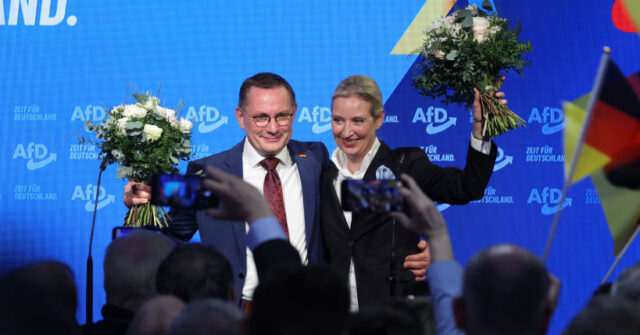Germany’s 2025 Elections: A Shift to the Right and a Crossroads for the CDU
Right-Wing Dominance and the Rise of the AfD
Germany’s 2025 federal elections have marked a significant shift in the country’s political landscape, with right-wing parties securing a clear majority. Preliminary results published by the Federal Returning Officer confirmed the dominance of the right at the ballot box, reflecting widespread voter sentiment favoring change. The Christian Democratic Union (CDU), led by Friedrich Merz, emerged as the largest party, securing 28.5% of the vote and 208 seats in the Bundestag. While this represents a modest improvement from their 2021 performance, the CDU’s victory is largely attributed to the decline of the left rather than a major surge in new supporters.
The real story of the election, however, is the dramatic rise of the Alternative for Germany (AfD), a right-wing sovereigntist party that more than doubled its vote share from 10.4% in 2021 to 20.8%, securing 152 seats. This result not only solidifies the AfD’s position as the second-largest party in Germany but also grants it unprecedented legitimacy. The party’s success is particularly notable given the election’s historically high voter turnout, the highest in the 21st century. The AfD’s co-leader, Alice Weidel, has expressed openness to forming a coalition with the CDU, extending an olive branch to the legacy conservatives.
A Potential Right-Wing Coalition and the Political Firewall
The combined seat count of the CDU and AfD totals 360, well above the 316 needed to form a majority government. On the surface, this seems like a natural alliance, given their shared right-wing ideologies and policy overlaps. However, the AfD’s rejection of Germany’s political status quo, particularly its stance on border control and migration, has long been a source of contention. The party’s existence is viewed as an existential threat by the legacy political establishment, which has worked tirelessly to exclude it from power through a so-called “firewall” or “cordon sanitaire.” This strategy, common in European politics, has been used to marginalize populist and sovereigntist movements in countries like France and Sweden.
The question now is whether this firewall can hold in the face of the AfD’s electoral success. While the CDU leadership may be tempting to partner with the AfD, doing so wouldlikely provoke backlash from left-wing activists and damage the party’s reputation internationally. This dilemma positions Friedrich Merz, the likely next Chancellor, at a crossroads: embrace political change by aligning with the AfD or cling to the status quo by forming a coalition with the left.
The Collapse of the Center and the Left
The 2025 elections also revealed the decline of Germany’s centrist and left-wing parties. The Free Democrats (FDP), who previously held significant influence as kingmakers in the Bundestag, failed to meet the 5% threshold, marking a humiliating end to their role in the outgoing government. Meanwhile, the newly formed Sahra Wagenknecht Alliance (BSW), a left-wing populist party critical of mass migration and the Ukraine War, narrowly missed the threshold with 4.97% of the vote. The party’s leader, Sahra Wagenknecht, has hinted at legal challenges, alleging irregularities and media suppression.
The traditional left fared no better. The Social Democrats (SPD), who led the previous government, saw their support plummet from 25.7% in 2021 to 16.4%, securing just 120 seats. The hard-left Die Linke (The Left) and the radical Greens managed to hold their ground, but their combined strength is far from sufficient to challenge the right-wing majority. These results underscore the widespread disaffection with the political establishment and the desire for change among German voters.
The Pros and Cons of a Grand Coalition
If the CDU opts to maintain the firewall and exclude the AfD from government, the only viable alternative is a grand coalition with the left. Such an alliance would bring together the CDU, SPD, and Greens, securing a comfortable majority of 413 seats. However, history has shown that such coalitions often lead to policy paralysis and a drift toward the left, as junior partners wield disproportionate influence. During Angela Merkel’s era of grand coalitions, this dynamic contributed to controversial policies, including the handling of the European migrant crisis.
Critics argue that a coalition with the left would betray the CDU’s election pledges and alienate its base. Furthermore, the instability inherent in three-party coalitions was evident in the collapse of the previous government, which led to this snap election. The AfD’s Alice Weidel has warned that such a coalition would be short-lived, predicting that Merz’s tenure as Chancellor would not survive the full four-year term.
Implications for Germany’s Future
The 2025 elections represent a turning point for Germany, with voters clearly signaling their desire for change. The right-wing surge reflects widespread concerns about economic stagnation, open borders, and the political elites’ disconnection from everyday citizens. However, the question remains: how much of this mandate for change will be honored by the CDU?
The CDU faces a difficult choice: embrace the AfD and risk political backlash, or revert to the status quo by forming a coalition with the left. Either path carries significant risks. While a right-wing coalition could lead to meaningful reforms, it would likely face fierce opposition from civil society and the media. On the other hand, a grand coalition with the left might offer stability but could also alienate voters who demanded change.
As the political landscape continues to evolve, one thing is clear: the 2025 elections have set Germany on a path of uncertainty and transformation. The choices made by the CDU in the coming weeks will shape the country’s direction for years to come, balancing the desire for change against the constraints of political pragmatism.


